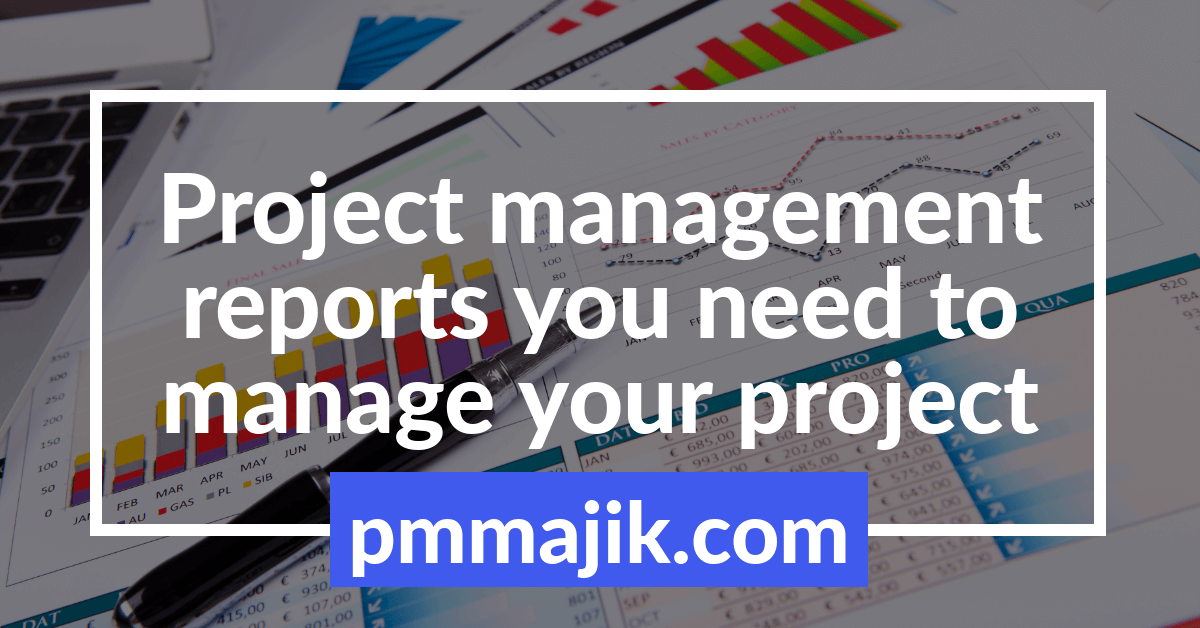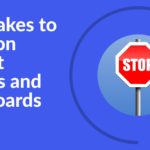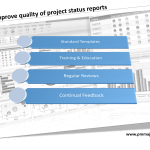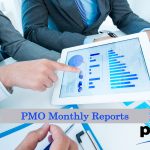Being able to communicate the important messages in a timely manner can make the difference between the success or failure of a project. That is why there are a number of critical project reports that every project should use.
Communication Plan
Each project should build a Communication Plan. The Communication Plan will answer the following questions:
- What kind of communication is required? (Management Meetings, Team Meetings, Management Reporting, Project Records)
- Who needs to be communicated with? (stakeholders)
- How frequent is the communication required? (how often)
- What needs to be communicated? (reports, meeting minutes, details or summary)
- How will this information be distributed? (in a meeting, as a report, in an email)
Essentially, the Communications Plan is the list of reports and updates needed throughout the project.
You can find out more in the post Communication Planning.
The Project Timeline
One of the critical elements that defines a project is the timeline.
A project by definition is a temporary endeavor; meaning it has a start and an end – which means it has a defined timeline. The timeline should be a visual overview of the project from start to finish.
One thing that sponsors care about is that the project will be delivered by an agreed date, especially where the project has a mandatory delivery date.
More details can be found in the post Project Planning.
The Project Budget or Financial Report
A project is constrained by three elements scope, schedule and cost. Therefore, a project budget is an important report.
Ideally, the report will show budget verses actual costs.
Remember the project sponsor will not thank you for not managing their budget.
For more details see the post Project Financial Planning.
The Project Team Contact Data
The team working on the project are often from various department, companies and even spread across the world – a virtual team.
The role of the project manager is to bring the group of people together to form a productive team.
Creating and distributing a list of team members, their roles and how to reach them is an important step in ensuring clear channels of communication.
For more details take a look at PMO Contact List.
The Project Risk Register
Managing project risks is often overlooked or miss understood by project managers.
Creating an initial Risk Register is key to managing project risks. Start by building a list of all the things that could impact the project.
Early on in the project, there will be a lot of these. As the project progresses and things become more clearly defined, many of these will be addressed.
It is important to review and update this list often throughout the project. Risk management is not a one-off event!
Learn more by visiting PMO Risk Management Plan.
The Project Status Report
A Project Status Report is an essential element of the project communication strategy.
The project status report is the barometer of the project – it will give the project manager, the project team and project stakeholders an overview of the health of the project. The status report might include;
- RAG status for each of the project elements; Scope, Schedule and Budget (budget optional)
- a list of the project milestones and their status,
- items completed in period
- items due next period
- a current run of budget status and
- any open risks.
See the post Why Project Status Reports are Powerful.
Open Action Items
It is important to keep track on all action items needed for the project. These should be captured on the Actions log.
During critical periods of the project, you might distribute this list daily. What is important is that important activities are captured and tracked to closure.
Remember, if it is not documented – it is not getting done.
The Project Stakeholder/Sponsor Dashboard
Stakeholders are not typically in project team meetings and they rarely review Project Status Reports. But they still want to have an update on the project progress.
For this audience, it is a good idea to provide a high-level visual representation of the project. Simple, easy to digest that gets to the point quickly.
Developing the content that will be included in the report or dashboard should be done early in the project and provided regularly and in a consistent format.
For tips on creating simple, useful dashboards see post 8 Mistakes to Avoid on Project Reports and Dashboards.
Important
Remember, just because you can produce a report or dashboard, it does not mean that you should.
It is very easy to design and publish reports because data is available. However, what you must ensure is that the data has value to the end user. If not, it is a waste of both the end user and your time.
When defining what reports are required (including what is included on each report), make sure you discuss the requirements with the sponsors and end users.
In a similar way, just because a report is being produced, make sure you are checking to see that it is still adding value, if it is not, stop producing it!
You should also consider the audience and try to design the report to distill the information so the critical messages can be quickly consumed and understood. Senior stakeholders do not typically have a lot of time to review long reports. Short and succinct will be well received.
Summary
Each project is different, the format, frequency and audience for these reports will be unique to the project.
Build a comprehensive Communications Plan that includes these key reports and your project team and stakeholders will thank you.






